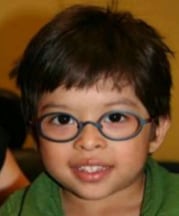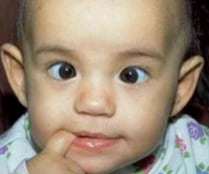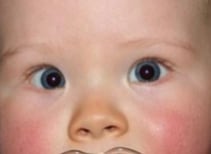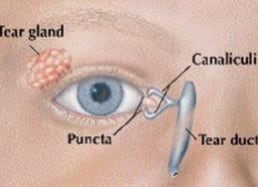Paediatric Conditions
Paediatric eye conditions
Normal Vision in Children
A baby’s eyes work from the time the baby is born, but the bay has to learn how to use them. This learning comes from looking around, seeing things, and learning their significance.
A newborn baby likes to look at it’s parent’s face. From about two months of age, the baby will look at a face and follow it. The eyes should be steady and should work together. Of course, there is a range when vision will develop but if there is any concern, it is better to have it checked early to exclude serious conditions that may require early treatment.
By the time a child starts school, the visual acuity is usually about the same as an adult. This is checked with an Eye Chart with letters or can also be checked with matching shapes or with special pictures. All children in NSW should have their vision checked by the Statewide Eyesight Preschool Screening (StEPS) after they turn 4 years old. If your child misses this screening test, at Preschool or day care, you should take him or her to your GP or an Optometrist to have a screening test. If the vision is not normal, you will be referred to an Eye Specialist.
Many eye conditions run in families. If a parent has a squint (strabismus), lazy vision, or has strong glasses, it is best to have the child’s eyes checked at about 3 years of age.
If you see your child screwing up the eyes when trying to see detail (ie squinting) of if you notice that he or she tilts or turns the head, when trying to see, he or she may well need glasses.
A paediatric ophthalmologist is the best professional to detect eye diseases and to check your child’s vision.

Photo courtesy of AAPOS
Strabismus
Strabismus refers to a misalignment of the eyes and also called a squint, or a lazy eye. It means that both eyes are not directed towards the same point. In an adult with otherwise normal vision, this would cause double vision. In an infant or child who grows up with it, it does not cause double vision, but can cause lazy vision in the turning eye (ie amblyopia).
Doctors worry about a squint because it can indicate that there is a problem with one or both eyes- like the need for strong glasses, or the presence of a cataract, or a congenital anomaly, or even a tumour in the eye or in the brain.
Many infants who have an appearance of having a squint, actually have normal eyes and normal coordination. They look like the eyes are misaligned due to the shape of the eyelids and bridge of the nose. This is called a pseudosquint.
If there is any uncertainty, it is worthwhile having things checked by an ophthalmologist to make sure.
Every case of squint is different. Some children need glasses. Some need to wear a patch on one eye. Some need exercises. Some need surgery. If there is a serious condition, aggressive treatment may be necessary.

Left convergent squint.
Photo courtesy of AAPOS

Pseudosquint (looks like right eye is turned in)
Photo courtesy of AAPOS
https://ranzco.edu/wp-content/uploads/2019/06/OPA-RANZCO-Strabismus-surgery-ed2-19-1.pdf (RANZCO fact sheet strabismus surgery)
Blocked tear duct
The tear gland, which makes tears, is under the outer end of the upper eyelid. Normally tears flow across the eye, washing any dust or matter that settles in the eye, to the inner corner and then drain down the tear duct into the back of the nose. This is why the nose runs, when we cry.
The tear duct normally opens within the first few weeks of life, to drain away tears, but in some babies, it does not open then, and the eye will stay watery, and will get sticky. Usually as the head grows, the tear duct will eventually open up, and drain the tears as it should.
If it does not open, and the eye is persistently watery and sticky, an operation known as “probing the tear duct”, can be performed to force the tear duct open. This has a very high success rate, but it requires a general anaesthetic.
There are other causes of watery eyes, or sticky eyes, which also need to be considered, and an ophthalmologist is the best person to advise what the problem is, and what is the best course of management. Every case is different.

Photo courtesy of AAPOS
Headaches in Children
There are many causes of headaches in children. Some serious causes of headache can show up in the eye examination- e.g., increased pressure in the brain. For this reason, it is often recommended for a child with headaches to have a complete eye examination with an ophthalmologist. Fortunately, these causes are rare.
Rarely, eye strain, arising from needing glasses or from struggling to keep the eyes working together, can cause headaches. This type of headache occurs after ocular effort (i.e., after reading, using a computer, or other detailed work).
Other more common causes of headache in children to consider are not drinking enough water (not sweet drinks or juice), not getting enough sleep, and not eating breakfast.
